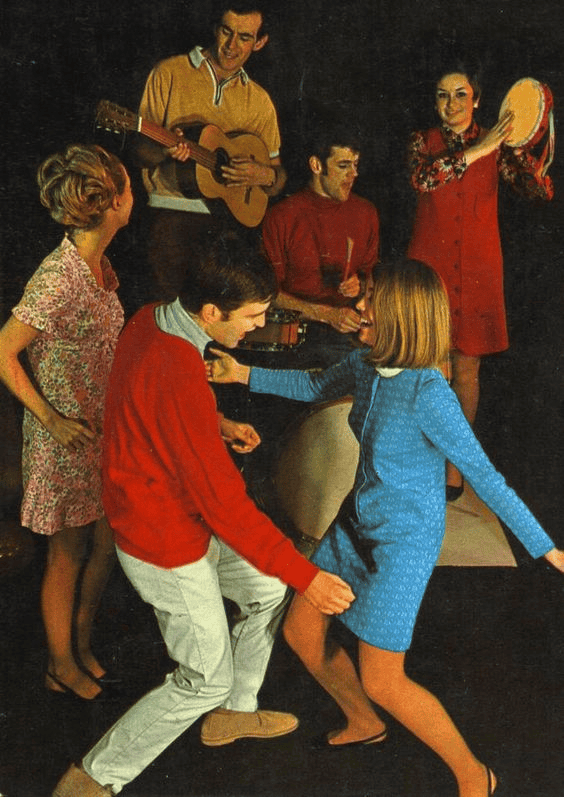The 1960s was a transformative decade in the United States, marked by an explosion of vibrant music, groundbreaking TV shows, and dynamic dance crazes. These dance crazes became integral to the 1960s popular culture, influencing fashion trends, youth culture, media representation, and the rise of dance shows.
Shows like “American Bandstand,” hosted by Dick Clark, played a pivotal role in popularizing these new dance styles, bringing them from local dance halls to the mainstream.
Iconic dances like the Twist and Mashed Potatoes captured the imagination of young people and became symbols of the era’s youthful energy and cultural revolution.
Join me as I explore the rise of dance crazes in the early 1960s, iconic dances of the era, their impact on popular culture, and tips on how to incorporate them into a themed party.
Credits: @jeromegigot3 / Pinterest
Key Takeaway
- The 1960s saw an explosion of vibrant dance crazes that significantly influenced popular culture, fashion, and media, becoming symbols of the era’s youthful energy and cultural revolution.
- Television shows like “American Bandstand” played a crucial role in popularizing these dances, bringing them from local dance halls to a national audience and showcasing moves like the Twist, Mashed Potatoes, and the Jerk.
- Music artists such as Chubby Checker, James Brown, and Marvin Gaye popularized these dance styles through their hit songs and performances, creating an enduring legacy.
- Dance crazes of the 1960s impacted fashion trends and youth culture, with their influence continuing into modern dance styles and entertainment, highlighting the era’s creativity and dynamic spirit.
The Rise of Dance Crazes in the Early 1960s
The late 1950s and early 1960s witnessed the emergence of numerous dance styles that captivated young people across the United States. This period was marked by a burst of creativity and energy as new dance crazes swept the nation, driven by the powerful combination of innovative music and influential media.
The dance floor became a hotbed of innovation, with new dances emerging that emphasized individuality and freedom of movement. These dances often had simple, repetitive steps that were easy to learn and perform, making them accessible to a wide audience. As these dances spread, they began to define the social and cultural landscape of the era.
Role of Music Artists
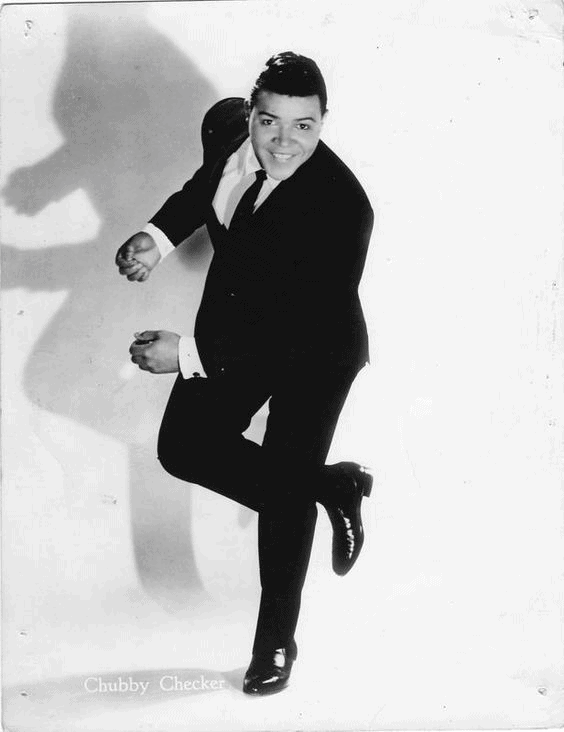
Credits: @groovyhistory / Pinterest
Music artists played a crucial role in popularizing these dance crazes. Hank Ballard, for instance, initially recorded “The Twist,” which set the stage for Chubby Checker to catapult it to fame with his own version.
Checker’s “The Twist” became a phenomenon, inspiring an array of follow-up hits and dance styles. Similarly, Dee Dee Sharp’s “Mashed Potato Time” and Gary U.S. Bonds’ “Twist, Twist Senora” contributed to the dance craze culture.
James Brown and Marvin Gaye also introduced new dance moves that would become staples on the dance floor.
Brown’s energetic performances and unique dance steps, like the Funky Chicken, influenced countless young dancers. Marvin Gaye’s smooth moves in songs like “Hitch Hike” became dance floor favorites.
Impact of TV Shows
Television shows, most notably “American Bandstand,” brought dance crazes to a mainstream audience. They featured young dancers performing the latest moves to the newest hits, providing a platform for dances to gain national popularity. The show’s format included segments where teens demonstrated new dance steps and helped popularize dances like the Pony, the Jerk, and the Hully Gully.
The TV show also promoted social dances like the Lindy Hop and the Hand Jive, encouraging viewers to participate and try them at local dance halls and parties.
Programs like “Soul Train,” which debuted in the 1970s, also continued the tradition of showcasing popular dance moves, ensuring the lasting impact of 1960s dance styles.
Iconic Dance Crazes of the 1960s
The Twist
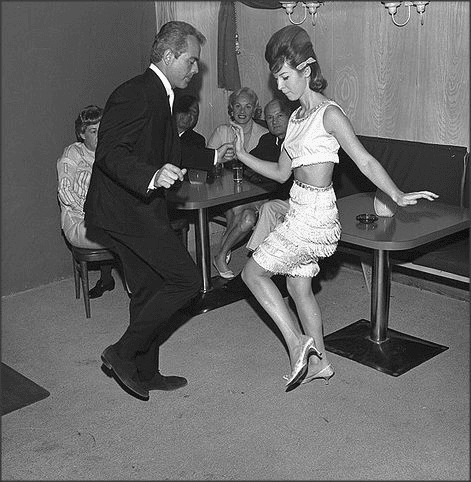
Credits: @kenschilling / Pinterest
The Twist, popularized by Chubby Checker in 1960, is perhaps the most famous dance craze of the 1960s.
Its simple yet infectious move—twisting the hips—made it accessible to everyone. Variations such as the Peppermint Twist and Slow Twistin’ kept the dance fresh and exciting, ensuring its place as a cultural phenomenon.
Mashed Potatoes
The Mashed Potatoes dance, brought to fame by Dee Dee Sharp’s “Mashed Potato Time,” involved a distinctive twisting motion of the feet that resembled mashing potatoes.
This dance became incredibly popular among young people and was often accompanied by upbeat tracks like James Brown’s “Mashed Potatoes U.S.A.”
The Watusi
The Watusi, characterized by its unique arm movements and footwork, drew inspiration from African dance traditions.
This connection to African roots added a rich cultural layer to its appeal. The dance became a worldwide craze thanks to songs like “Wah-Watusi” by The Orlons. Its energetic and distinctive moves made it a staple at dance parties across the globe.
Funky Chicken
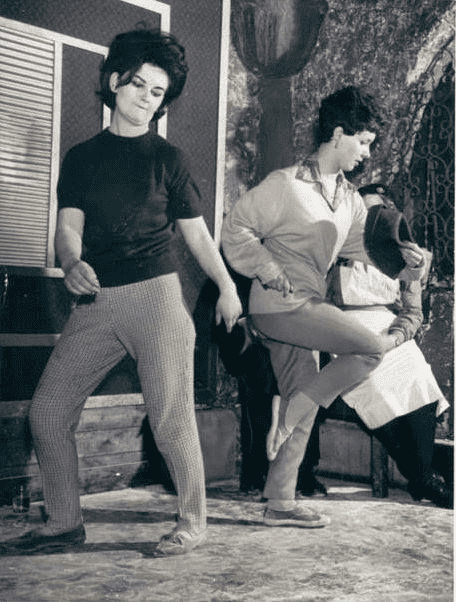
Credits: @georgeslazic / Pinterest
The Funky Chicken, which was made famous by Rufus Thomas’s song “Do the Funky Chicken,” was a fun and eccentric dance that mimicked the movements of a chicken.
It involved flapping arms and stomping feet, providing a humorous and light-hearted addition to the dance floor. Its distinctive and playful style made it a favorite among dancers looking to add fun to their moves.
The Jerk
The Jerk, characterized by its sharp, sudden movements, became a major dance craze in the 1960s. Popularized by songs such as “The Jerk” by The Larks and “Come On, Do The Jerk” by The Miracles, the dance involved quick, jerky motions of the arms and legs.
Its unique style resonated with the energetic and expressive nature of the era’s youth.
Monkey Time

Credits: @sonicssixty5 / Pinterest
The Monkey, popularized by Major Lance’s hit “The Monkey Time,” featured playful, exaggerated movements that mimicked the motions of a monkey. This dance became a hit in the 1960s, with its rhythmic and entertaining style capturing the attention of young dancers everywhere.
Its lively and carefree moves were perfect for the energetic spirit of the decade.
The Loco-Motion
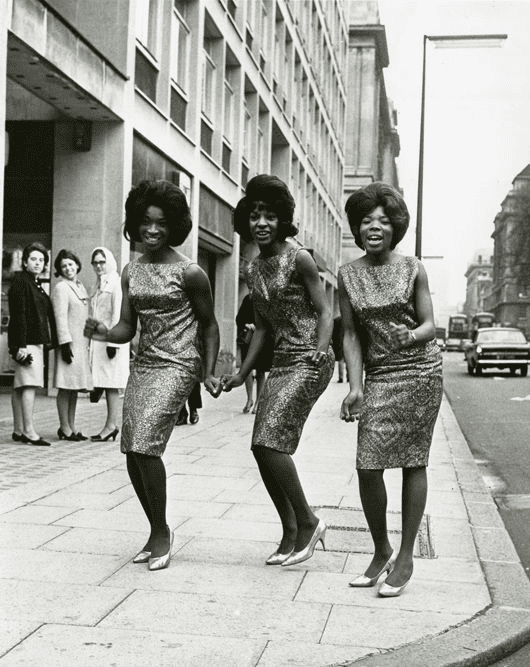
Credits: @udiscovermusic / Pinterest
The Loco-Motion,” brought to fame by Little Eva, was a dance that encouraged everyone to “do the Loco-Motion.”
Its catchy tune and easy-to-follow steps made it an enormous hit. The dance involved a series of simple, repetitive movements accessible to all, making it a staple at dance parties.
The Pony
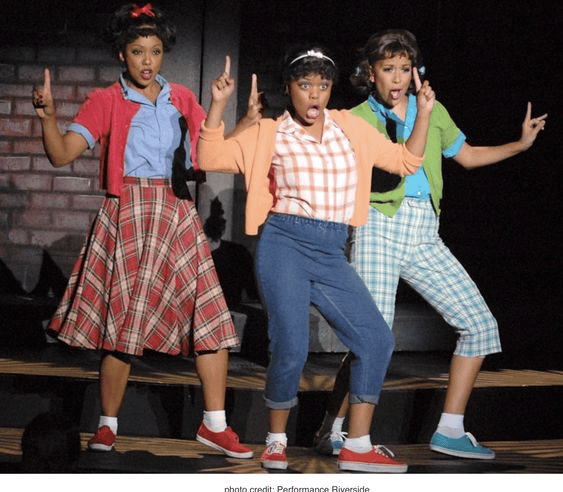
Credits: @Academy4ChildrensTheatre / Pinterest
The Pony, popularized by Chubby Checker’s hit “Pony Time,” was inspired by the playful and rhythmic motion of riding a horse. This dance involved quick, bouncy steps and became a sensation among teens and young adults.
Its simplicity and fun appeal made it easy for everyone to join in, whether at home, in dance halls, or on TV shows.
Hitch Hike
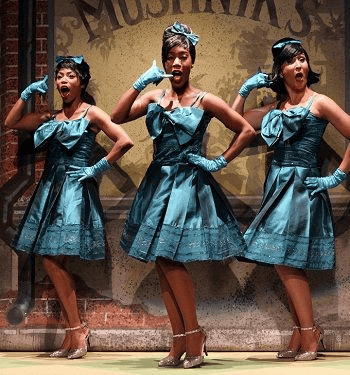
Credits: @broadwayworld / Pinterest
The Hitchhike, popularized by Marvin Gaye’s song “Hitch Hike,” involves dancers mimicking the thumb gesture used to hitch a ride and other stylized arm movements.
This dance was easy to learn and quickly became popular at parties and clubs. The Hitch Hike’s catchy rhythm and fun gestures made it an enduring part of the 1960s dance scene.
The Hully Gully
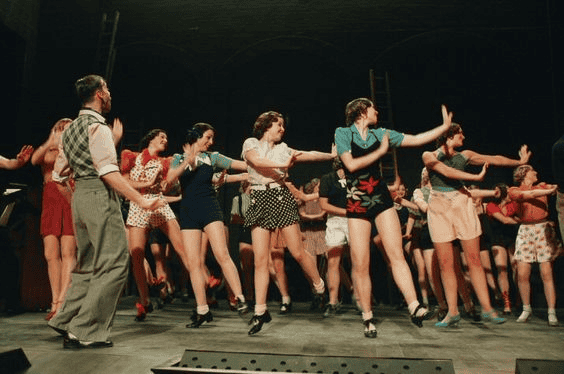
Credits: @trillianhunter / Pinterest
The Hully Gully, a popular group dance, was known for its repetitive steps and social nature. Songs like “Hully Gully Baby” by The Dovells and “Hully Gully Again” by Little Joe & The Thrillers made this dance a hit. It involved a series of simple steps that were easy to follow, encouraging large groups to join and dance together.
The Hully Gully’s call-and-response format added to its appeal, making it a mainstay at parties and dance halls. This dance craze exemplified the communal spirit of the 1960s dance scene, bringing people together in rhythmic unison.
The Swim
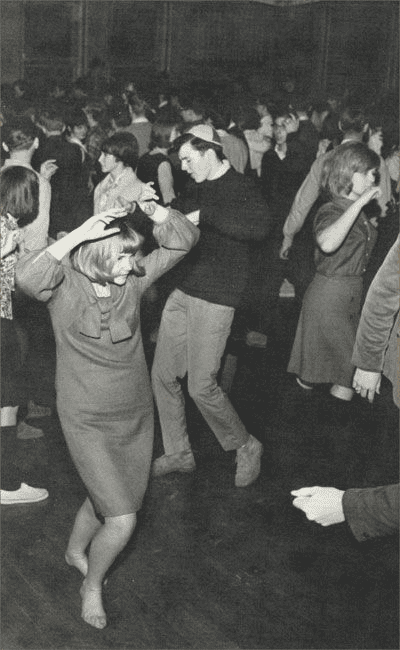
Credits: @kenschilling / Pinterest
The Swim, inspired by swimming strokes, became a sensation in the 1960s dance scene. Bobby Freeman’s “C’mon and Swim” propelled this playful dance into the limelight, making it an instant hit at parties and dance halls.
With its catchy beat and easy-to-follow steps, The Swim quickly gained popularity among young adults looking to cool off and have fun on the dance floor. The dance mimicked various swimming motions, incorporating arm strokes, kicks, and body rolls, creating a lively and energetic atmosphere.
Shimmy Shimmy Walk
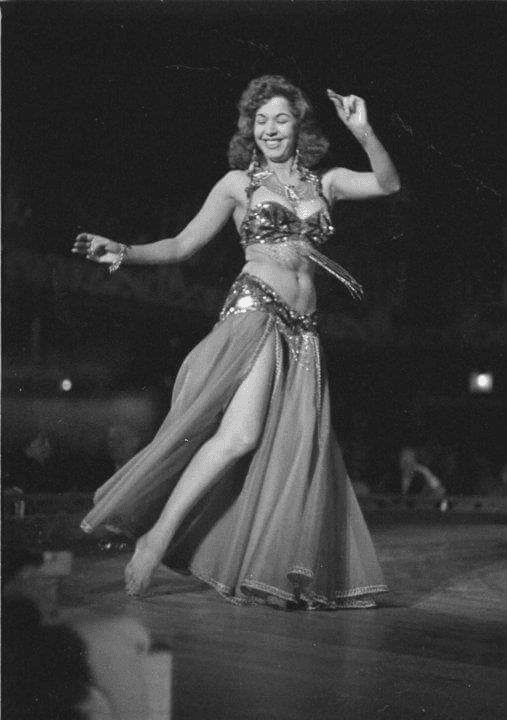
Credits: @emy927 / Pinterest
The Shimmy Shimmy Walk, a lively and rhythmic dance, gained popularity through songs like “Shimmy Shimmy Walk” by The Megatons.
This dance involved many shaking and shimmying movements, emphasizing the fun and free-spirited nature of 1960s dance culture. Its energetic style made it a favorite among dancers looking to express themselves on the dance floor.
Dance Crazes and Popular Culture
Dance crazes didn’t just influence the dance floor; they significantly impacted fashion and youth culture. Styles evolved to accommodate the new moves, with mini skirts and go-go boots becoming popular.
Movies and TV shows incorporated these dances into their storylines, further embedding them in popular culture. Shows like Soul Train, which debuted in 1971, drew directly from the dance craze phenomenon, creating a dedicated platform for showcasing dance and great music.
The legacy of these dances continued into later decades, influencing the development of hip-hop dancing and other modern styles. The energy and creativity of 1960s dance crazes have left an enduring mark on popular culture.
How to Incorporate 1960s Dance Crazes into Your Themed Party
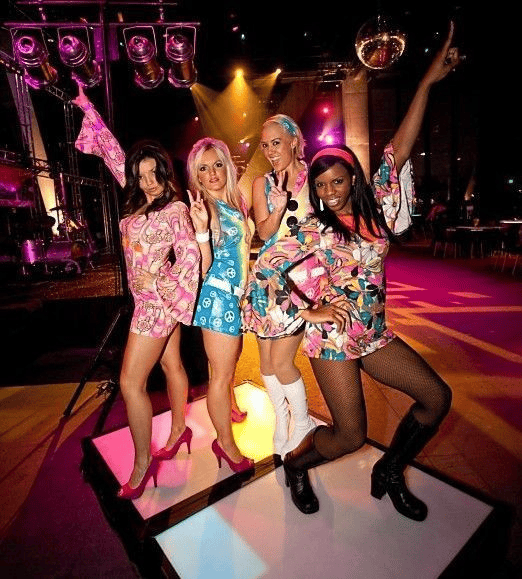
Credits: @chiquita17lopez / Pinterest
Hosting a 1960s dance craze-themed party is a fantastic way to relive the era’s excitement.
Here are some tips to make your party a smashing success:
- Decorate Your Venue: Use bright colors, vinyl records, and posters of iconic 1960s musicians to set the scene. Incorporate elements like dance floor decals and retro lighting to create an authentic vibe. Set the mood with disco balls and old-school record albums to create a groovy atmosphere.
- Create a Playlist: Fill your playlist with hits from the 1960s, including Chubby Checker’s “The Twist,” Dee Dee Sharp’s “Mashed Potato Time,” and other popular dance craze anthems.
- Provide Dance Instruction: Hire a dance instructor or use online tutorials to teach guests the iconic moves. Consider setting up a small stage where guests can showcase their skills.
- Organize Dance Contests: Hold contests for the best Twist, Watusi, or Pony. Award prizes for the best dancers and most creative moves to keep the competition fierce and the laughter flowing.
- Make sure to capture the fun with a photo booth featuring 1960s props and costumes. Encourage guests to dress in period attire to immerse themselves fully in the theme.
Conclusion
The 1960s dance crazes were more than just a series of dance moves; they reflected the era’s vibrant spirit and cultural shifts. Iconic dances like the Twist and Mashed Potatoes defined a generation and paved the way for future dance trends. By celebrating these dances through themed parties, we can honor the legacy of the 1960s and experience the joy and excitement that these dance crazes brought to the world.
Whether twisting at a retro-themed party or jerking on the dance floor, the legacy of the 1960s dance crazes lives on, reminding us to keep the beat alive and dance like nobody’s watching.
Get your groove on and host your own 1960s dance party today! Let the music play, the feet move, and the good times roll as you celebrate the timeless magic of this iconic era.

